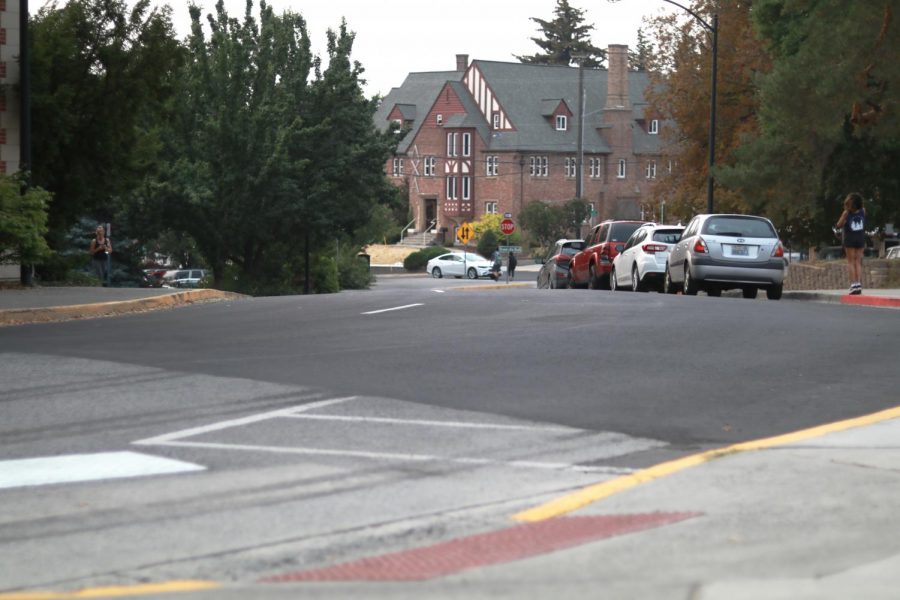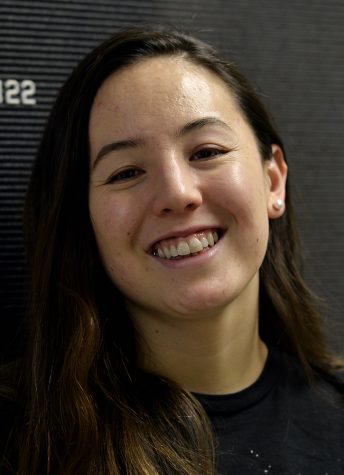WSU walkway test results in safer pedestrians, less traffic
The trial run focused on protecting pedestrians, improving traffic
OLIVER MCKENNA | THE DAILY EVERGREEN
Thatuna Street (pictured) was blocked off during the walkway trial run this summer.
August 20, 2018
A summer trial run of a new pedestrian path by WSU Transportation Services has resulted in less traffic and positive pedestrian feedback, said Brent Atkinson, transportation options coordinator.
The route prohibited access to Thatuna Street between Colorado and Linden streets for a month.
The trial, which ran in June, aimed to protect pedestrians from vehicle traffic. Atkinson said that by moving pedestrians across the street, fewer people were crossing into the line of traffic.
The trial achieved all the goals it set out to, he said.
“People felt a lot more comfortable, it was a direct shot,” Atkinson said. “They didn’t feel like they had to be on the lookout for cars.”
The test established the most desirable and direct path for pedestrians and bicyclists, and decreased traffic in some high-volume areas, he said.
“[The trial] removed pedestrians from busy crosswalks on Colorado Street, Linden Street and Thatuna Street,” Atkinson said, and increased the “safety, flow and pedestrian connectivity for those accessing campus from College Hill.”
According to data from WSU Transportation Services, Monroe, Campus and B streets saw a reduction in traffic post-demonstration, while the traffic on Colorado slightly increased.
“Our assumption is people started taking different routes,” he said. “From a safety standpoint that was a positive as well.”
Most of the negative reactions came from drivers who had to change their usual route, Atkinson said.
During the trial, Pullman Transit redirected its buses down Linden Street.
One of the biggest issue for drivers was navigating the corner of Linden and B street, which is more narrow than the usual route.
“One of the issues was that Linden was a very narrow street and making those turns was pretty tight,” said Anoma Hansen, a transportation dispatcher for Pullman Transit. “If the pedestrian path goes in, the potentially narrow streets would be a challenge, especially in the winter when there’s snow.”
Pullman Transit and WSU will work to address any issues that arise if the path eventually becomes permanent, Hansen said.
“Overall I really love the idea of making it easier for pedestrians,” she said. “That would be consistent with (WSU’s) goals to pedestrianize its campus.”
Transportation Services plans to do another week-long trial next year during a time with high traffic, Atkinson said. However, for those concerned their campus route might be disrupted, there will not be any changes in the near future.
“It won’t be happening any time soon,” he said.










